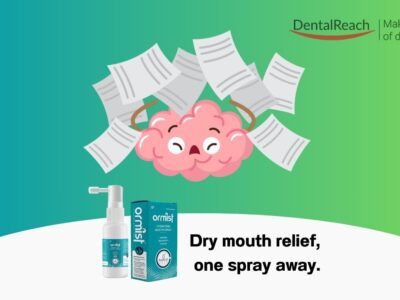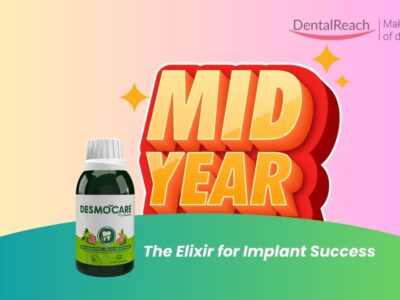Editorial for Volume 6, Issue 8
As we reach the midpoint of the year, it’s an opportune moment to reflect on the diverse and intricate world of dentistry. This mid-year issue of DentalReach delves into a variety of captivating topics that showcase the breadth and depth of dental practice. From historical insights to modern challenges, this edition promises to engage and inform both seasoned practitioners and curious readers alike.
Practicing Dentistry While Pregnant
Practicing dentistry while pregnant presents unique challenges that require careful consideration and adaptation. Pregnant dentists must navigate physical changes, potential exposure to harmful substances, and ergonomic adjustments in their daily practice.
Physical Changes and Ergonomics
During pregnancy, a female dentist’s body undergoes significant physiological changes that can affect their ability to perform routine tasks. Increased body weight, altered center of gravity, and swelling may necessitate modifications in posture and workstation setup. Ergonomic chairs with proper lumbar support and adjustable height can help mitigate discomfort.
Exposure to Harmful Substances
Pregnant dentists must be vigilant about exposure to potentially hazardous substances such as nitrous oxide, mercury from amalgam restorations, and radiation from X-rays. Implementing stringent safety protocols, including using protective barriers and ensuring proper ventilation, is crucial. Additionally, delegating certain tasks or adjusting work schedules can minimize risks.
Managing Workload and Stress
Balancing workload while managing pregnancy-related fatigue is essential for maintaining overall health. Open communication with colleagues about workload distribution can ensure a supportive work environment. Regular breaks, hydration, and stress-reducing practices like prenatal yoga can also contribute to well-being.
Dentistry BC: Ancient Origins
The history of dentistry dates back thousands of years, revealing fascinating insights into ancient civilizations’ approaches to oral health.
Early Dental Practices
Archaeological findings indicate that ancient Egyptians practiced dentistry as early as 3000 BC. They utilized rudimentary tools made from flint or bronze for extractions and treatments. Similarly, evidence from ancient Mesopotamia suggests that tooth decay was treated with various herbal concoctions.
Contributions from Ancient Greece and Rome
Ancient Greek texts describe procedures such as tooth extractions using forceps-like instruments. The Romans further advanced dental knowledge by developing gold crowns for damaged teeth—a precursor to modern restorative techniques.
Influence on Modern Dentistry
These early practices laid the foundation for contemporary dental science. Understanding the historical context enriches our appreciation for modern advancements in materials science, pain management, and preventive care.
Zoo Dentistry: Ensuring the Oral Health of Captive Wildlife
Zoo dentistry is a specialized field dedicated to maintaining the oral health of captive wildlife—a critical aspect of animal welfare in zoological settings.
Unique Challenges in Zoo Dentistry
Treating animals ranging from small primates to large carnivores involves unique challenges not encountered in traditional human dentistry. Anesthetizing large animals safely requires expertise in veterinary anesthesiology combined with dental proficiency.
Common Procedures
Routine procedures include scaling tartar buildup on teeth or performing root canals on infected molars. Specialized equipment adapted for different species ensures effective treatment without causing undue stress or harm to the animals.
Importance of Preventive Care
Preventive care is paramount in zoo dentistry; regular check-ups help detect issues early before they escalate into severe problems requiring invasive interventions. Collaboration between veterinarians and dental specialists ensures comprehensive care plans tailored specifically for each species’ needs.
Use of IV Ringers Lactate During Extractions in Patients with Polypharmacy: A Case Report
Managing patients who are on multiple medications (polypharmacy) poses significant challenges during dental procedures due to potential drug interactions or compromised physiological states.
Case Overview
This case report explores how IV Ringers Lactate was used effectively during tooth extractions for a patient undergoing polypharmacy treatment—highlighting its benefits over traditional methods under specific conditions requiring fluid balance maintenance alongside surgical management. Complexities inherent within such scenarios presenting themselves clinically today more frequently than ever before, given aging populations are globally increasing and their reliance upon pharmacological therapies.
A female patient reported to the clinic for extraction of her grossly carious but firm maxillary central incisor. The patient was severely anemic, hypotensive and taking multiple medications. To prevent dizziness or syncope during extraction, IV Ringers Lactate was administered during extraction. 24 hours post extraction, IV DNS 5% with Multivitamin Injection (MVI) was administered to prevent weakness. The article describes a novel approach to the age-old problem of dental extractions in heavily medically compromised patients and provides rationale for the same.
The Rise of SLS-Free Toothpaste
One notable trend gaining traction is the increased popularity of SLS-free toothpaste. Sodium Lauryl Sulfate (SLS) is a common ingredient found in many conventional toothpastes due to its ability to create a foaming action that helps spread the toothpaste evenly throughout your mouth. However, recent studies and consumer feedback have raised concerns about its potential side effects.
Why Choose SLS-Free Toothpaste?
SLS-free toothpaste offers several benefits that make it an attractive choice for health-conscious individuals:
- Reduced Irritation: SLS can cause irritation for people with sensitive gums or pre-existing conditions like canker sores. By opting for an SLS-free alternative, users may experience less discomfort and fewer outbreaks.
- Gentler on Mucous Membranes: The harsh nature of SLS can strip away essential oils from mucous membranes, leading to dryness and irritation. SLS-free toothpastes are formulated to be gentler on these delicate tissues.
- Lower Allergenic Potential: Some people are allergic to SLS, experiencing symptoms such as redness, swelling, or itching in their mouths after using products containing this ingredient. Choosing an SLS-free option can help avoid these allergic reactions.
- Environmentally Friendly: Many consumers are becoming more environmentally conscious and prefer products that align with their values. SLS is derived from palm oil, which has been linked to deforestation and habitat destruction. By choosing an SLS-free toothpaste, you may be supporting more sustainable practices.
Dental News Brief: Advancements in Oral Health and Implant Dentistry
In recent years, the field of dentistry has witnessed remarkable innovations and advancements that have significantly improved oral health care. From cutting-edge technologies to novel treatment methodologies, these developments are transforming patient experiences and outcomes. This blog post delves into the latest breakthroughs in oral health and implant dentistry, highlighting how they are shaping the future of dental care.
Xylitol Chewing Gum: A Sweet Solution for Oral Health
Dentists are increasingly recommending xylitol chewing gum to enhance patients’ oral health. Patients are advised to chew xylitol gum for at least 5 minutes after meals and snacks for optimal benefits.
Short Implants Show Promise in Posterior Premolar Region
A retrospective study has demonstrated the efficacy of short dental implants in the posterior premolar region. The study, which analyzed 54 short implants placed in 41 patients over a 5-year period, reported a success rate of 94.4%.
Vitamin D: A Potential Topical Treatment for Periodontal Disease
Recent research has highlighted the potential of vitamin D as a topical treatment for preventing and managing periodontal disease. Vitamin D plays a crucial role in maintaining oral health by regulating calcium metabolism, enhancing immune function, and reducing inflammation.
Do You Wish to be a Part of the Revolution?
If you liked what you read and wish to be a part of our writing team, I would love to invite you all onto our side! Become a dental journalist and write engaging content – showcase your expertise, engage with fellow professionals and influence dentistry in your own way!
Email me your articles directly to the following email id – editor@dentalreach.co. Be a part of the DR revolution!




















Comments